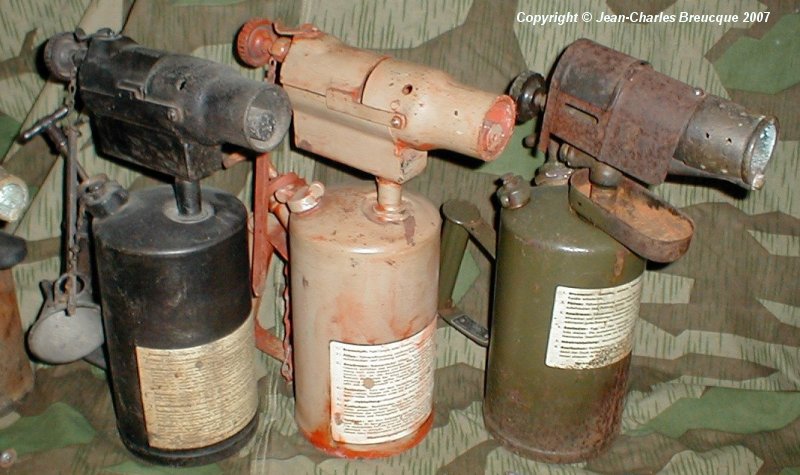
Tiger engines were difficult to start after cold nights. Several solutions were provided, culminating in a system called Fuchsgerät (Flue Equipment). It allowed the engine's cooling water to be heated by a standard German blowtorch, like these ones.
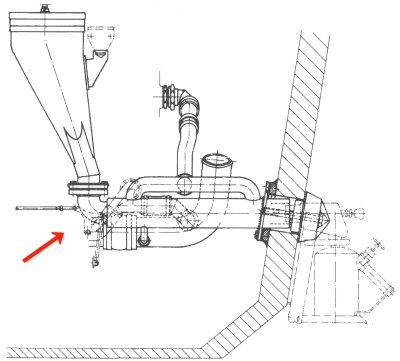
Inside the hull, the flames passed through a hollow sleeve that carried the engine's cooling water. This diagram is from a German original, showing the Fuchsgerät in a Tiger E. We are looking from the left side of the tank. The flames from the blowtorch were ultimately emitted through the sheet-metal flue at the top left of the diagram, into the engine compartment.
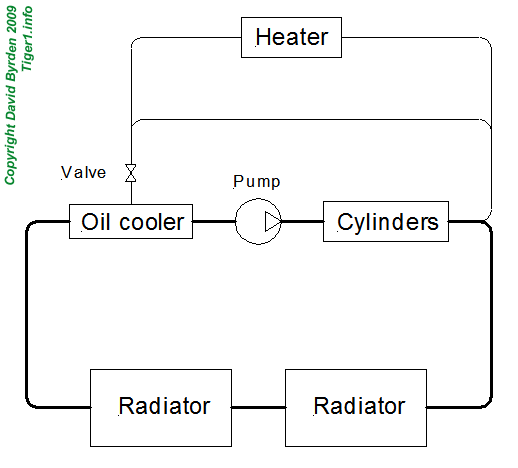
This schematic shows how the heater and the valve related to the rest of the cooling-water system. When the heater was used, the engine was not turning and the therefore the pump did not work. The hot water would flow in the reverse direction, driven by convection.
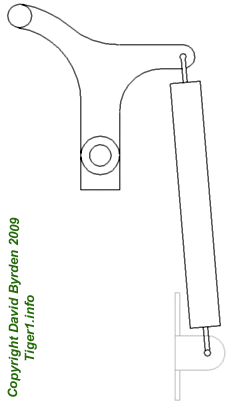
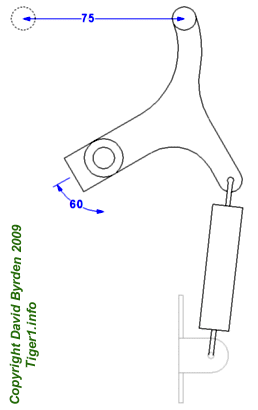
These two drawings show the two positions of the lever. To use the heater, one would pull the lever forward by means of the cable. To return to normal operation, one would release it; it had a spring that returned it to its default position. The amount of travel was 75mm.
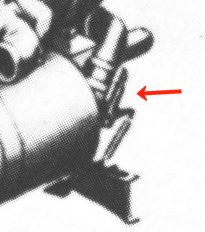
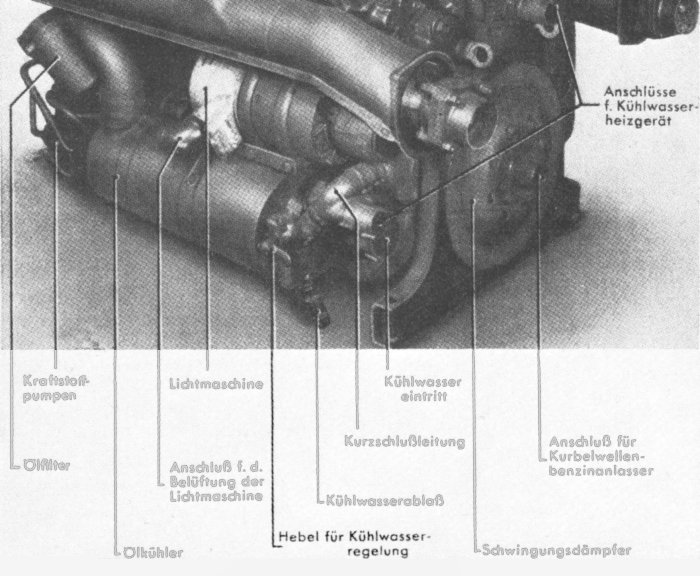
In these German photos of HL230 engines, we can see the "lever for controlling the cooling water". These early examples have a V-shape slightly different to what was drawn above.
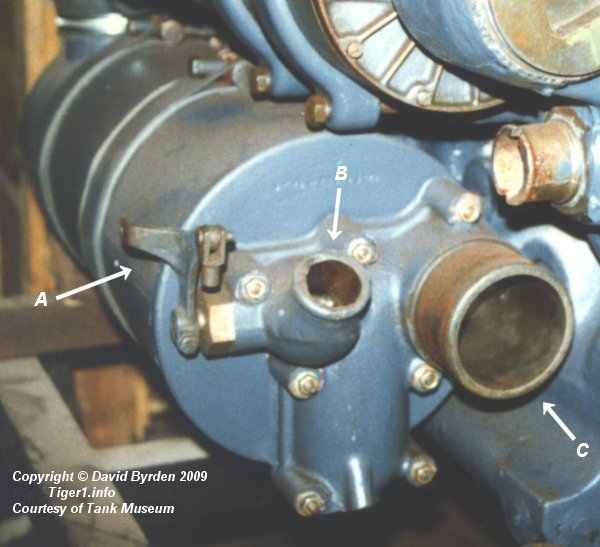
In this engine (from the Tiger B in Bovington) we can see the later version of the lever, marked 'A'. The valves are integrated into the rear cap of the oil cooler. The bypass pipe, of 40mm diameter, connects at 'B'. The main water pipe to the radiators, of 80mm diameter, connects at 'C'.
[1] Survey of vehicle 251114, at Saumur, by Jean-Charles Breucque
[2] DW to Tiger 1
[3] Survey of Sturmtiger at Panzermuseum Munster, by Rob Veenendaal
[4] Der Panzerkampfwagen VI und seine abarten, Walter J. Spielberger, Motor Buch Verlag